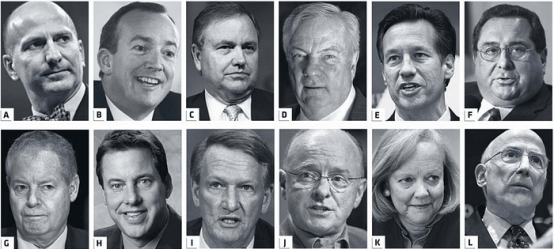Body Language and Microexpressions: Unveiling the Truth About "Microexpressions"

Microexpressions are genuine emotional expressions that people unconsciously reveal in a short period of time (typically 1/15 to 1/30 of a second). They often appear when a person experiences strong emotions but attempts to conceal them. Unlike ordinary facial expressions, microexpressions are difficult to consciously control or fake, which is precisely what makes them so valuable.

Mastering the skill of recognizing microexpressions can help you see through words and gain insight into others' true psychological states. Let's unveil the truth about microexpressions together and learn to correctly interpret these signals. Try using XXAI to get a microexpression analysis report with one click.
The Discovery History of Microexpressions
Early Research (1966-1967)
Psychologists Haggard & Isaacs (1966) first discovered these "micro-momentary" expressions while watching psychotherapy session recordings. When they slowed down the playback, they saw expressions completely missed at normal speed—disgust flashing across a patient's face, instantly covered by a smile. These expressions were so brief (just a few frames) that even the therapists present didn't notice them.
Almost simultaneously, Condon and Ogston (1967) conducted microinteraction research. Condon spent a year and a half analyzing a 4.5-hour film frame by frame (each frame only 1/25 of a second), discovering the "micro-rhythms" in interpersonal interactions—such as a wife slightly shrugging her shoulders at the instant her husband raised his hand.

Ekman's Contribution
Paul Ekman, while studying deceptive behavior, discovered that when people try to conceal strong emotions, their true feelings "leak" in the form of ultra-fast, subtle expressions. Your brain shows disgust before it consciously realizes "I shouldn't show disgust." He systematized this concept, formally creating the term "microexpressions," and explored it in depth in his classic work "Telling Lies," establishing the foundational framework for microexpression research.
The Confusion Around the "Microexpression" Concept
Unfortunately, over time, the term "microexpressions" has been overgeneralized, leading to three key problems:
- Failure to distinguish expression magnitude: Tiny, slight, and obvious facial changes are lumped together
- Failure to distinguish expression speed: Fast and ultra-fast behaviors have no clear boundaries
- Ignoring expression quality: Asymmetric or stiff expressions (like forcing a smile at a barking dog) are also broadly categorized
This confusion makes it difficult for us to accurately judge others' true intentions. Therefore, we need a clearer classification system.
Detailed Explanation of the Seven Universal Emotions
Ekman discovered that regardless of cultural background, humans express these 7 basic emotions through facial expressions:
1. Happiness
Typical Expression:
- Corners of mouth turn upward
- Crow's feet appear at eye corners (key to genuine smiles)
- Cheeks lift
Evolutionary Function: Social bonding, conveying friendly signals
Cultural Differences:
- Western: Encourages loud laughter, showing teeth when smiling
- East Asian: Traditionally encourages subtle smiles
Recognition Challenge: Fake smile vs. genuine smile
- Genuine smile: Orbicularis oculi muscle contracts (eye wrinkles)
- Fake smile: Only zygomatic major muscle contracts (mouth corners)
2. Sadness
Typical Expression:
- Corners of mouth turn downward
- Inner eyebrows raise
- Eyelids droop
- Lower lip may protrude or tremble
Evolutionary Function: Seeking comfort, obtaining help
3. Anger
Typical Expression:
- Eyebrows lower and furrow
- Eyes widen
- Lips tighten or teeth clench
- Nostrils flare
Evolutionary Function: Deterring potential threats, competing for resources
Danger Signals:
- Facial flushing
- Neck veins exposed
- Rapid breathing
Response Suggestions:
- Lower voice volume (don't yell back)
- Increase physical distance
- Acknowledge their feelings: "I understand you're angry"
- Discuss after emotions have calmed
4. Fear
Typical Expression:
- Eyes widen (increases field of vision)
- Eyebrows raise and draw together
- Mouth opens
- May be accompanied by recoiling movements
Evolutionary Function: Quickly identifying danger, preparing to flee
Difference from Surprise:
- Fear: Eyebrows converge toward the middle
- Surprise: Eyebrows maintain arched upward position
5. Disgust
Typical Expression:
- Nose wrinkles
- Upper lip raises
- May be accompanied by recoiling or turning head away
Evolutionary Function: Avoiding ingestion of toxic substances
Two Types of Disgust:
- Physical Disgust: Toward foul odors, rotten food
- Moral Disgust: Toward immoral behavior (learned)
6. Surprise
Typical Expression:
- Eyebrows raise high (arched)
- Eyes widen
- Jaw drops (mouth opens)
Evolutionary Function: Quickly processing unexpected information, reassessing environment
Characteristics:
- Shortest duration (typically <1 second)
- Quickly transforms into other emotions (happiness/fear/anger)
Recognition Key: Genuine surprise is sudden; feigned surprise often lasts too long, with delayed appearance and insufficient symmetry
7. Contempt
Typical Expression:
- One-sided mouth corner raises (most critical feature)
- May be accompanied by sideways glance
- Nose slightly raises
Evolutionary Function: Establishing social hierarchy, excluding group members
Uniqueness: This is the only asymmetric universal emotion (the other 6 are all symmetric)
Cultural Differences:
- In some cultures, expressing contempt brings serious social consequences
- More common in hierarchical societies
Relationship Killer:
Psychologist John Gottman: Contempt is one of the "Four Horsemen" of marriage (four major signs predicting divorce: criticism, defensiveness, contempt, stonewalling)
Benefits of Reading Facial Expressions and Microexpressions
Facial expressions may be the most important facial signals because they can tell us about people's personalities, emotions, motivations, or intentions. Microexpressions are not only markers of people's internal states; they also send action signals to others, providing information for social coordination; they are also important signals for socialization and cultural adaptation.
Facial expressions are also special because they can express different, independent emotions (also called the seven universal emotions)—anger, contempt, disgust, fear, happiness, sadness, and surprise.
When we read someone's facial expressions, we know:
- How their mind is processing something (antecedents and appraisals)
- Where their attention is focused (cognitive gating)
- What state their body is in regarding action (emotional functioning; physiological features)
Conclusion
Microexpressions are not mind reading, but rather a window—allowing us to better understand others' emotional worlds. The ultimate purpose of observing expressions is not to "win," but to better understand, to make communication smoother, to make relationships more genuine, to have fewer misunderstandings and more understanding in this world. Microexpressions tell us about emotions, not truth. While maintaining keen observation in interpersonal interactions, we must also maintain rational judgment.
If you still can't distinguish the seven universal emotions, you can try using XXAI's Microexpression Reading Expert. Simply upload a photo to get a detailed microexpression analysis report that helps you understand others' true emotions.